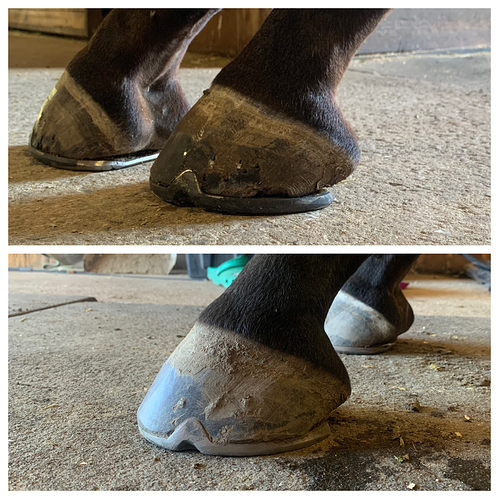We’re living such similar lives.
I’m going to take pics to update the other thread, but last night my boy’s hind right shoe had lost the two medial nails and shifted, causing him to step on the clip which embedded itself in his hoof wall. Que frantic calling of new farrier, who happened to still be in the area, and a late night emergency reshoeing situation. My boy was so sore behind (suddenly? he was fine the day before) that he kept kicking out trying to get his leg back and we had to give him a bucket of cookies to get him done and even then it was a sweaty, tense, miserable affair.
Puncture in the hoof wall was cleaned up and packed with artimud. He was immediately more comfortable behind in wedges when he was done. Old farrier texted me this AM to see how horse was doing in the hind shoes he put on last week  I answered but did not fully explain that horse is now wearing another man’s shoes.
I answered but did not fully explain that horse is now wearing another man’s shoes.


